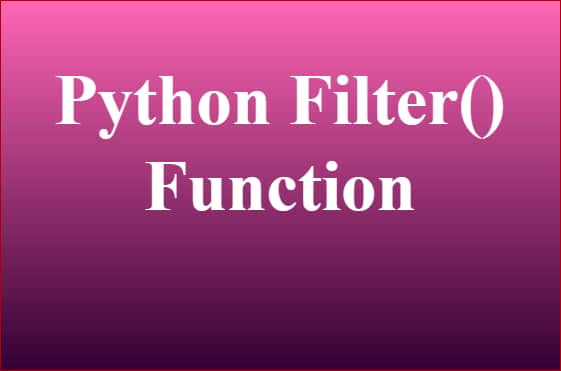Python’s functional programming features offer elegant solutions for data manipulation, and the filter() function is a prime example. It provides a concise, efficient way to filter elements from an iterable based on a condition, returning a filter object that can be easily converted into iterables like lists or tuples. This article explores the filter() function, illustrating its utility with examples and demonstrating how it can enhance your Python code.
Understanding the filter() Function
The filter() function in Python applies a specified condition (or function) to each item of an iterable and returns an iterator for those elements for which the function returns True. This function embodies the principles of functional programming, emphasizing the use of functions and avoiding explicit loops for element filtering.
Syntax of filter()
The syntax for filter() is straightforward:
filter(function, iterable)
function: A function that tests if elements of an iterable return true or false. IfNone, the function defaults to the identity function, filtering out elements that areFalseor equivalent (e.g.,0,False,None,[],{}).iterable: The iterable whose elements are to be tested and filtered.
How Does filter() Work?
To understand the workings of filter(), consider an example where you want to filter out even numbers from a list:
def is_even(number):
return number % 2 == 0
numbers = [1, 2, 3, 4, 5, 6]
even_numbers = filter(is_even, numbers)
print(list(even_numbers))
Output:
[2, 4, 6]
Here, filter() applies the is_even function to each item in numbers, returning a filter object that only includes the items for which is_even returns True. Using list(), we convert this filter object into a list of even numbers.
Advantages of Using filter()
- Readability: Code utilizing
filter()can be more readable and concise, especially when filtering criteria are complex. - Efficiency: For large datasets,
filter()can be more efficient than equivalent loop-based filtering, as it is optimized for its specific use case. - Versatility: The
filter()function can be used with any iterable, providing flexibility in data processing tasks.
Using filter() with Lambda Functions
Lambda functions or anonymous functions can be used with filter(), making the code more concise for simple filtering conditions:
numbers = [1, 2, 3, 4, 5, 6]
even_numbers = filter(lambda x: x % 2 == 0, numbers)
print(list(even_numbers))
This single-line expression achieves the same result as the previous example, filtering even numbers from the list.
Practical Example: Filtering Non-Empty Strings
Consider a scenario where you need to filter out non-empty strings from a list of strings:
strings = ["hello", "", "world", "", "python", ""]
non_empty_strings = filter(None, strings)
print(list(non_empty_strings))
Output:
['hello', 'world', 'python']
In this example, by passing None as the function, filter() automatically filters out any items that are false according to Python’s truth value testing.
Conclusion
The filter() function is a powerful tool in Python’s functional programming arsenal, enabling developers to write more expressive, efficient, and readable code. By understanding and utilizing filter(), you can perform data filtering tasks with ease, making your Python programming experience more productive and enjoyable. Whether dealing with data analysis, web development, or any other Python-based application, incorporating filter() into your coding practices can significantly enhance the quality and performance of your code.

